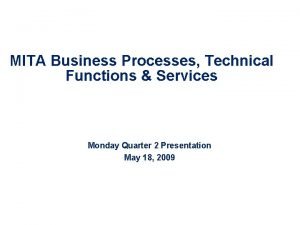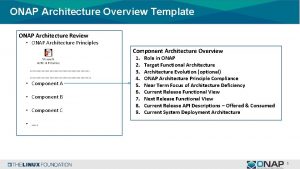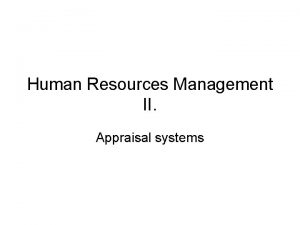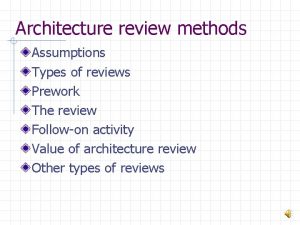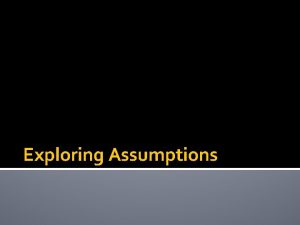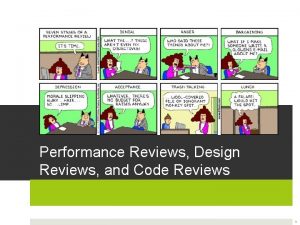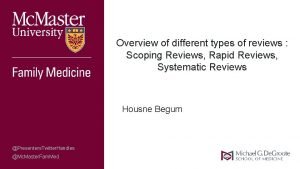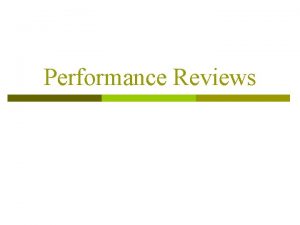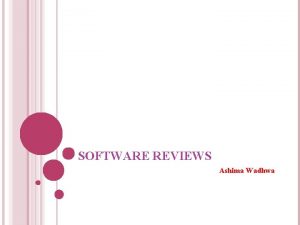Architecture review methods Assumptions Types of reviews Prework












- Slides: 12

Architecture review methods Assumptions Types of reviews Prework The review Follow-on activity Value of architecture review Other types of reviews

Assumptions The architecture team believes that the review may be helpful to them The review will be conducted by a small team of experienced architects from outside the project There will be an opportunity to apply learning from the review to the software

Types of reviews Early n n Architecture is just emerging Focus is on assessing direction Regular n n Architecture is mostly done Focus is on validating against requirements Quality attribute assessment n n Architecture has a problem or coming change Focus is on how to fix or adapt

Types of pre-work Define review objectives Form review team Set agenda Collect and excerpt existing documentation Prepare talks (and possibly docs) specifically for the review Checklists Prototype and/or measure

Sample checklist questions - performance Are the key scenarios defined? Are frequencies for key scenarios known? Has hardware been selected? n If not, is the economically-feasible range known? Do budgets exist for shared resources (CPU, memory, disk space, disk accesses, etc)? Do developers know their resource allocations? Do developers have a way to check their resource utilization?

The review “Typical” agenda Ground rules Recording methods

“Typical” agenda Introductions Purpose and objectives Requirements Overall architecture Architecture for critical subsystems Quality attributes Reviewers’ caucus Reviewers’ feedback to the project team

Ground rules Do not design on the fly!!! n But it’s OK to suggest approaches or resources Most aspects of the project have some connection with the architecture, so all types of questions are in order n But time is limited All participants’ ideas may have value n But time is limited

Recording methods Scribe(s) “snow” cards CR Overuse of Singleton pattern – likely to limit scalability Perf/Cap DES

Follow-on activity Written report Communication with upper management and/or project sponsor Project response to issues raised Ongoing consulting

Value of architecture review Decisions made as part of pre-work Documentation written Amplification of projects’ up-the-chain messages Once in a while, uncovering a critical issue Education for project team Improved cross-project awareness Identifying cross-project trends

Other types of reviews Business case Requirements Software design UI design Code reviews, code inspections Test plans Project management
 Direct and indirect wax pattern
Direct and indirect wax pattern The two doctrinal types of after action reviews are:
The two doctrinal types of after action reviews are: Computer architecture performance evaluation methods
Computer architecture performance evaluation methods Chapter review motion part a vocabulary review answer key
Chapter review motion part a vocabulary review answer key Ap gov final review
Ap gov final review Nader amin-salehi
Nader amin-salehi What is inclusion and exclusion
What is inclusion and exclusion Narrative review vs systematic review
Narrative review vs systematic review Architecture review board template
Architecture review board template Mita business process model
Mita business process model Onap architecture
Onap architecture Types of procurement
Types of procurement Types of appraisal methods in hrm
Types of appraisal methods in hrm









